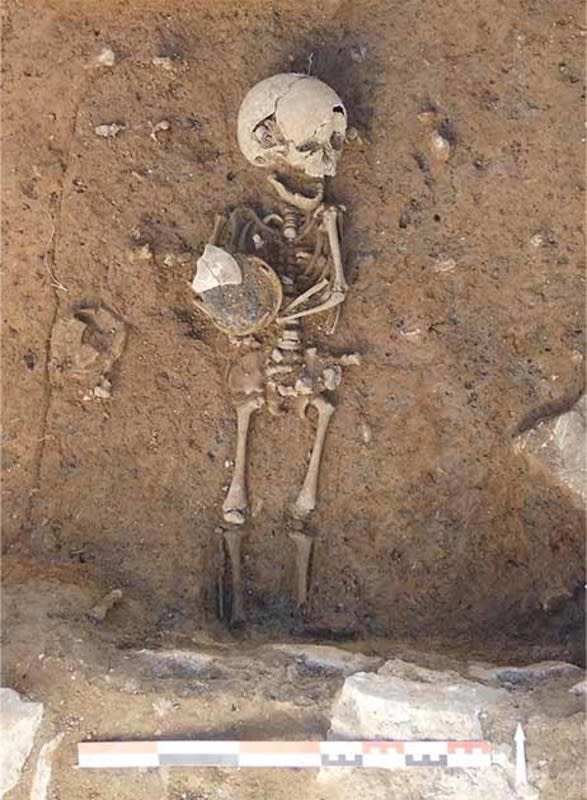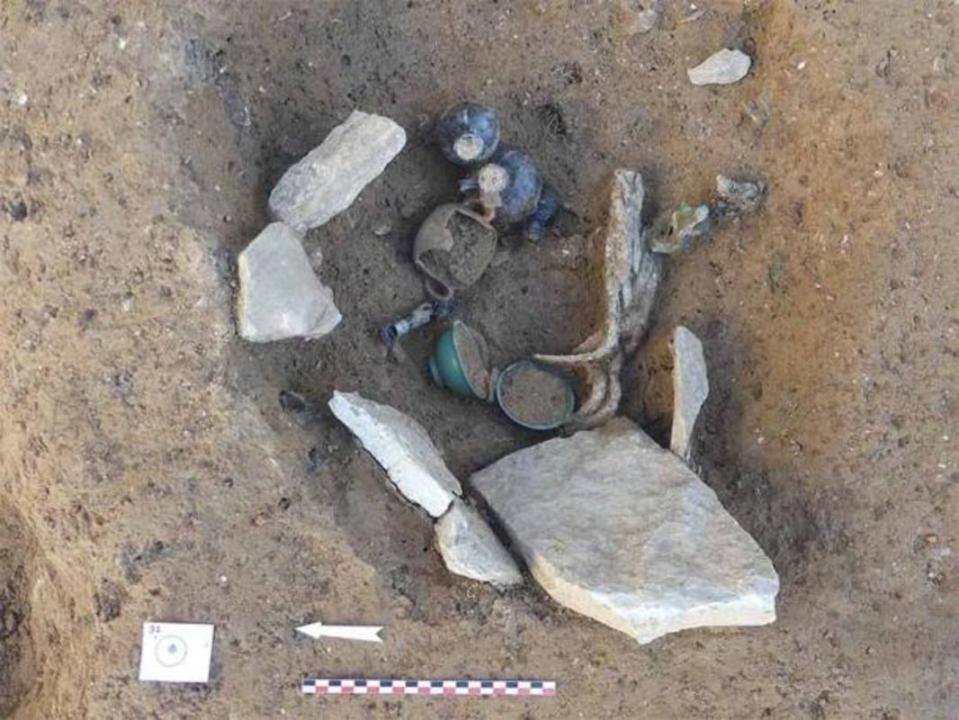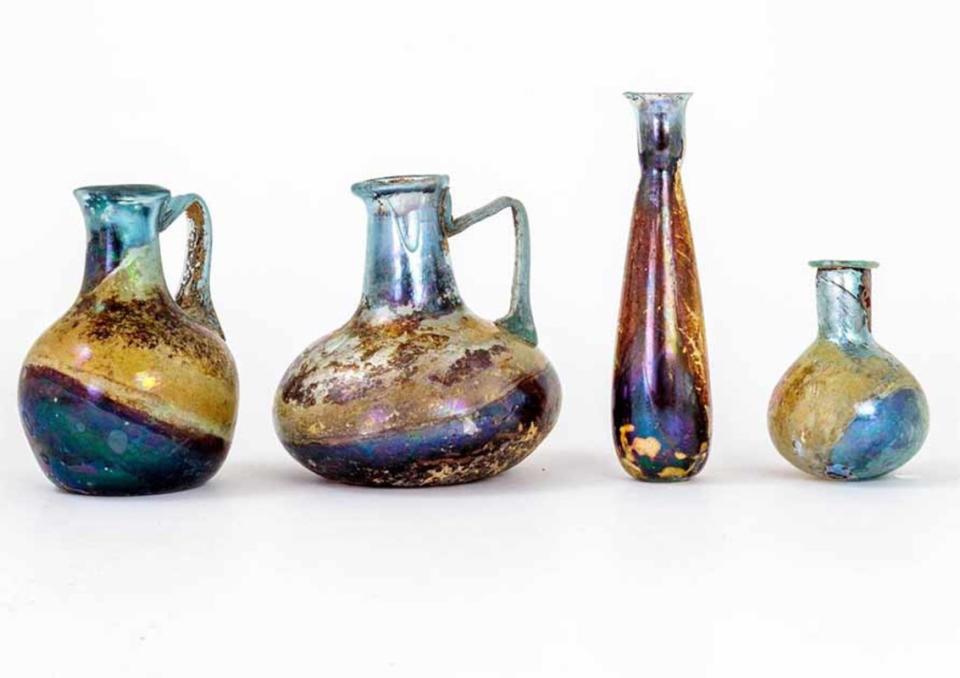Archaeologists Discover Skeletal Remains, Remarkably Preserved Glassware at Ancient Roman Settlement
French archaeologists made several astonishing discoveries in Rue de Beaucaire in Nîmes, including roads, skeletal remains, funeral pyres, and well-preserved glassware.
According to Archaeology Magazine (via INRAP) they date back to somewhere between the 2nd and 1st centuries B.C. and 2 A.D. and were made near the Via Domitia, once a major Roman trading route. A previously undiscovered road, about 50-feet wide and constructed of stone slabs, was also uncovered during the latest dig.
So far, a total of 15 burials have been confirmed along the route. Some of the funeral pyres were constructed from terracotta tiles and limestone and rubble, though a few were little more than holes dug in the soil. Photos show remarkably intact skeletal remains and burnt bones from cremations discovered within.

Archaeology News / J Grimaud / INRAP
Many objects of great value were also recovered from the tombs. Found amongst the dead were bathing tools, pieces of funerary monuments, and pottery such as glass vases, ceramics, paste cups, and lamps.

Archaeology News / V Bel / INRAP
The recovered glassware is particularly ornate and well-preserved to a degree officials stress is uncommon in archaeology.
There are a few reasons for the’ remarkable condition of the vases, chief among them the impurities in Roman glassware, which contains iron that causes a green hue.
The artifacts also became more spectacularly detailed as they sat underground due to photonic nano-structures in the glass itself. Each of the many layers wore away over the centuries, gradually morphing into new colors.

Archaeology News / V Bel / INRAP
The vases were left on site during Roman rituals known as “refrigerium,” which is a meal commemorating the dead held during their funeral which focuses on consuming wine from glass vessels.
Also discovered on the land was an ancient well, which archaeologists will soon excavate in the hope of recovering more remarkable artifacts.

